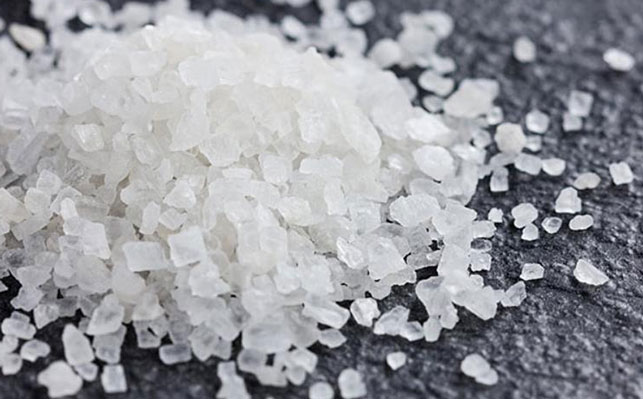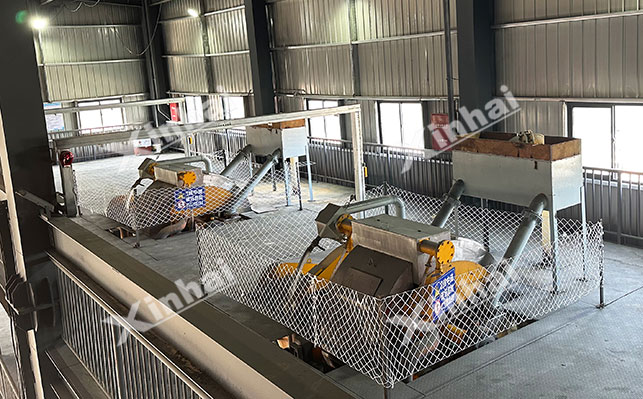
15311826613
Click to add WeChatQuartz sand is a mineral particle aggregate with quartz as the main component. Its main component is silicon dioxide, and its content is usually between 90%-99%. It has stable chemical properties, high hardness, and good high temperature resistance and corrosion resistance. It is used in construction, glass, electronic information, chemical industry, etc. According to the different components of quartz sand, the application environment is also different. Here we will introduce the classification and application of quartz sand and the quartz sand extraction process .
As an important industrial mineral raw material, quartz sand can be divided into many types according to different standards, and its composition is closely related to its use.

According to the particle size, quartz sand can be divided into coarse sand, medium sand and fine sand.
Coarse sand: The particle size is greater than 0.5mm, and the texture is relatively rough;
Medium sand: The particle size is between 0.35-0.5mm, and the particles are moderate;
Fine sand: The particle size is in the range of 0.25-0.35mm, and the particles are fine.
According to the use, it can be divided into ordinary quartz sand, refined quartz sand and high-purity quartz sand.
Ordinary quartz sand: The silica content is usually 90%-95%, containing more metal oxide impurities such as iron, aluminum, calcium, magnesium, and mineral impurities such as feldspar, mica, and clay. It is mostly used in the construction industry and is the main aggregate of concrete and mortar. It is used in infrastructure construction such as house construction and road paving.
Refined quartz sand: The silica content is 95%-99%. It is a product after further mineral processing and purification. It is mostly used in glass, ceramics and chemical industries.
High-purity quartz sand: silicon dioxide content ≥99.9%, some high-precision products even require ≥99.99%, almost no or only trace impurities. Often used in semiconductors, fiber optic communications, optical lenses, electronic components and other fields.
1. Physical extraction process

Quart Flotation: Utilize the difference in physical and chemical properties between quartz sand and impurity mineral surfaces to achieve separation by adding flotation agents. Generally, collectors are adsorbed on the surface of impurities such as feldspar and mica to make them hydrophobic; the surface of quartz sand remains hydrophilic, and under the action of bubbles, impurity minerals adhere to bubbles and float up and are separated from quartz sand. The process is to first adjust the pH value of the slurry to weak acidity (pH=5-7), add an adjuster to inhibit quartz sand, and then add a collector and a frother for flotation. After roughing, concentrating and scavenging, impurities such as feldspar and mica can be effectively removed to improve the purity of quartz sand.
Gravity separation: It is based on the difference in the settling speed of mineral particles in water for classification. Coarse-grained quartz sand settles quickly, while fine-grained and impurity particles settle slowly. Separation is achieved through grading equipment (such as spiral chutes and hydrocyclones). It is mostly used to process coarse-grained quartz sand, and can effectively remove impurities such as feldspar and mica.
Magnetic separation: The main purpose is to remove impurities containing magnetic separation. By using the magnetic difference of minerals, magnetic impurities (such as iron-containing minerals such as magnetite, hematite, and biotite) are separated from quartz sand through a strong magnetic field. The finely ground minerals are sorted multiple times using a magnetic separator, which can reduce the iron content in quartz sand from 0.1% to below 0.03%.

Acid washing: Use strong acids such as hydrochloric acid, sulfuric acid, and hydrofluoric acid to react chemically with metal impurities (such as iron, aluminum, calcium, and magnesium oxides) to dissolve them into the solution, thereby removing impurities. Usually, quartz sand and acid are mixed in a certain proportion, stirred in a reactor, and the temperature is controlled at 50-80°C for 2-4 hours. After the reaction, the residual acid and dissolved impurity ions are removed by water washing. Hydrofluoric acid can effectively remove impurities such as titanium dioxide and iron oxide in quartz sand, but due to its strong corrosiveness, special protection is required.
Alkali washing: Use strong alkaline solutions such as sodium hydroxide and sodium carbonate to react with acidic impurities (such as clay minerals and organic impurities) in quartz sand to dissolve or convert them into soluble salts, thereby removing impurities. Usually, quartz sand is mixed with alkali solution, reacted at high temperature (80-100℃) for 1-3 hours, and then washed with water until neutral. Alkali washing can effectively remove organic impurities and some silicate impurities in quartz sand.
High temperature chlorination: At high temperature (1200-1500℃), chlorine or chloride gas is introduced to react with chlorine to generate volatile chlorides in quartz sand, which escape from quartz sand to achieve purification. It is mainly used in the production of high-purity quartz sand and can reduce the impurity content to ppm level.
Biological extraction is mainly a microbial leaching extraction process, which uses the metabolism of microorganisms (such as Thiobacillus ferrooxidans and Thiobacillus thiooxidans) to oxidize and dissolve metal impurities such as iron and aluminum in quartz sand. Microorganisms obtain energy by oxidizing sulfur and iron in minerals, and at the same time produce sulfuric acid and iron ions. Sulfuric acid reduces the pH value of the environment and promotes the dissolution of metal impurities. Generally, quartz sand is mixed with microbial bacterial liquid and cultured under suitable temperature (25-35℃) and pH value (1.5-2.5) conditions, and the reaction time is 10-30 days.
High-purity quartz sand has requirements for the content of SiO₂. Generally, the SiO₂ content is ≥99.9%, and the SiO₂ content of some high-end products is ≥99.99%. In addition, there are strict restrictions on the content of impurities, Fe₂O₃≤10ppm, Al₂O₃≤50ppm, Cr₂O₃≤1ppm, Li₂O≤1ppm, etc. The extraction of high-purity quartz sand requires deep purification, and the acid leaching-roasting-flotation combined process is often used.
Acid leaching: First use strong acids such as hydrochloric acid and sulfuric acid to remove most of the metal impurities, and then use hydrofluoric acid to further remove stubborn impurities such as titanium dioxide and iron oxide, so that the purity of quartz sand reaches more than 99.5%.
Roasting: The quartz sand after acid leaching is roasted at a high temperature of 1000-1200℃ to expose the inclusions and lattice defects inside the quartz sand, and at the same time, remove the residual organic impurities.
High-purity quartz sand flotation: Use the reverse flotation process, add specific collectors and adjusters, remove residual impurities such as feldspar and mica, and finally obtain high-purity quartz sand.

The extraction process of quartz sand varies according to its use and purity requirements. Ordinary quartz sand is mainly extracted by physical methods, using processes such as magnetic separation and gravity separation to remove obvious impurities; refined quartz sand requires a combination of physical and chemical methods to further reduce the impurity content; high-purity quartz sand relies on complex deep purification technology, such as acid leaching-roasting-flotation combined process, high-temperature chlorination, regional melting, etc., to meet the strict requirements of high-end fields.